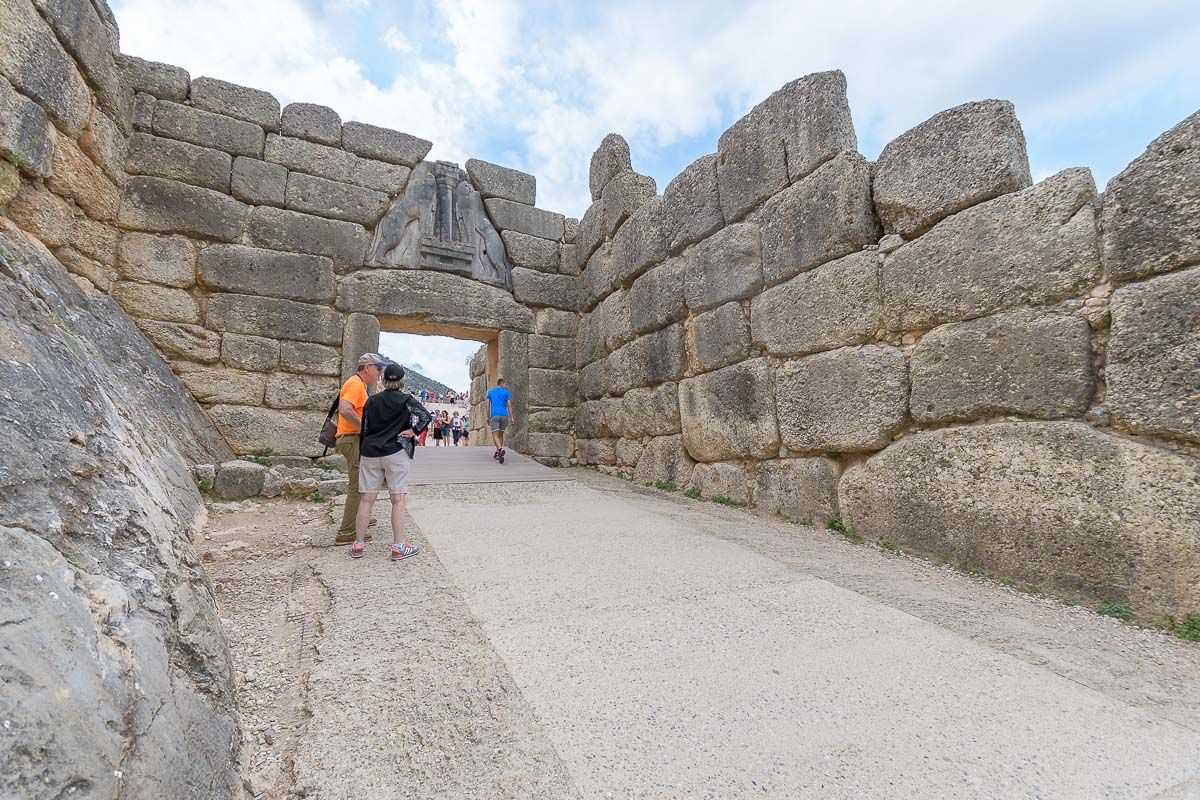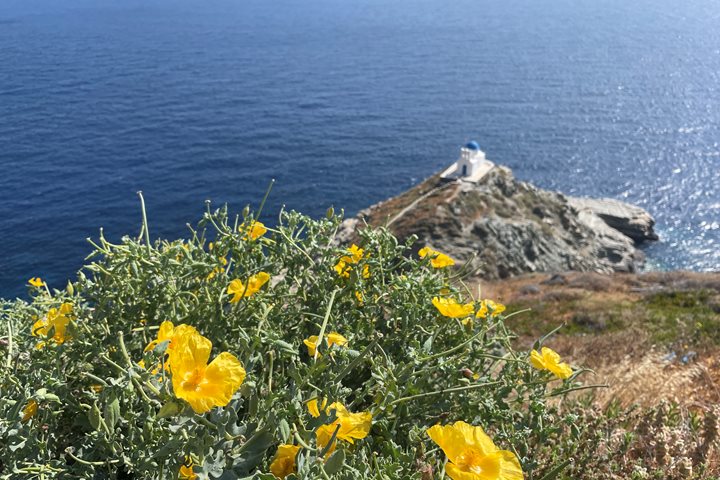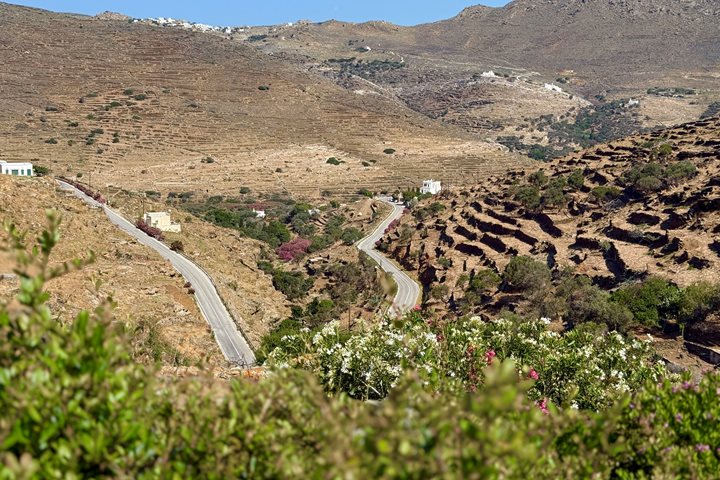Due to continuing strong winds, the final full day of our Greek Islands voyage took us out of the Cyclades and into the Peloponnese. We anchored off the charming town of Nafplio, the first capital of modern Greece from 1829 until 1834. While some chose to explore this Venetian-influenced seaside town on their own, most chose to join Eleni and Kriton for a guided tour of some of the most important archaeological sites in Greece. We began in Mycenae, namesake of the Late Bronze Age civilization that thrived in the Aegean. The characteristic feature of a Mycenaean citadel is substantial defensive walls, a feature seemingly lacking on Minoan Crete. The entry gate through Mycenae’s massive walls is termed the Lion Gate after its triangular stone relief of two lions (or lionesses?) flanking a wooden column. After visiting the citadel, we saw the so-called Treasury of Atreus, actually a tholos (or beehive) tomb that is yet another impressive architectural accomplishment. We then continued on our journey, past hills dotted with modern windmills and ancient olive groves, to the Hellenistic-era site of Epidaurus. Here we tested the acoustics at the best-preserved ancient theater in Greece, while distant thunder hinted at the afternoon rain to come. Kriton and Eleni described the religious function of theater in the ancient Greek-speaking world, an especially important role at this site famed for its healing abilities. As we traveled back to the port from Epidaurus, the rain arrived, and it continued through much of our final afternoon aboard. The storms disrupted our sailing plan, but provided an appropriate backdrop for a viewing of the classic film, Around Cape Horn, a narrated documentary about sailing aboard a tall ship in the 1920s.
6/18/2025
Read
Sea Cloud
Sifnos, Greece
Today’s port of call was Sifnos, a small island gem in the Cyclades. The captain took us to a nice little port, Platos Gialos. Two groups, Zeus and Apollo, went on a scenic drive to medieval Kastro. This town was built on a small hill as a castle, as the word Kastro suggests. As we walked the narrow streets, we were amazed by its charm. Cats invited us to pet them, and amazing views opened around every corner. Some of us went down to a small peninsula to see the picture-perfect Church of the Seven Martyrs while others immersed themselves in the town’s atmosphere. Our next stop was Kamares, a ferry port in a beautiful bay. We were treated to a selection of the best local food Sifnos can offer on a terrace by the beach. Photographers: Linda Burback and Ante Skracic







